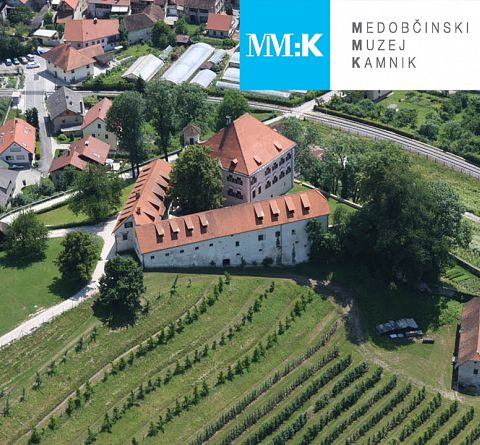Museum stories
Unknown painter, Portrait of General Mihael Pregl, 1623
o.pl., 200 x 123 cm, painter of the first half of the 17th century / painted by A. Koželj. The portrait of "General Wachtmeister" Mihael Pregl is painted completely frontally, in a standing position. He holds a rifle in his right hand, he has a helmet on his right leg, and a dog on his left ...
Read more
Read more
The unusual life of a helmet from Vrhpolje near Kamnik
It was 1928. Farmer Kregar, who rented Romšak's field in Vrhpolje near Kamnik, was hit by unusual objects while plowing with a plow. In 1935, he gave the helmet (he thought it was a tin pot made of metal. He used it for feeding hen in the yard), along with iron spears and axe, to Josip Nikolaj ...
Read more
Read more
The treasure finding of coins from Češnjice in the Tuhinj valley
The found treasure which contained more than hundred gold coins, mostly Hungary ducats, some Spanish doble excellente and more than thousand, five hundred silver coins, mainly Venetian liras and some copper coins, might indicate that the coins were owned by the merchant who in the middle of the ...
Read more
Read more
Votive image from Kamnik, 1794
A motive painting, painted on wood, depicts the terrible accident of a young girl, Theresa Beč, in 1794. A simple painter tried to portray the girl's fall as a kind of movie frame. There was an accident in a child's play when Theresa was standing on a rock, following her fall from a rock above a ...
Read more
Read more
Tombstone of the Dindii, Second half of 1st century, Kamnik
For Caius Dindius Blandus and Octavia Quarta, the daughter of Publius, to the son Caius Dindius Blandus, aged eight. The tombstone was discovered around 1830 in Kamnik, under the Zaprice castle. It was later built into the wall of the former pub Pri Krištofu, now called Ideja Kamnik (Šutna ...
Read more
Read more
Tinder on a chain, Mali grad
Biconcave or lenticular tinder on a chain, Iron, 13th century, Mali grad. This is a common medieval form of tinder that can be of a more or less convex shape. Apart from its practical use tinder also has a symbolic meaning. For instance the South Slavs believed that the flint stone symbolised ...
Read more
Read more
Shepherd's shoes, around 1950
Shepherd's shoes are from wood, mostly maple, on Velika planina, with a distinctive knit upper made of larch wood (later replaced by leather). The sole was protected with nails for safer walking. It is believed that the nails appeared around 16-17 century. They are often found as archaeological ...
Read more
Read more
Mint coins from Kamnik, 13th century
Coin mint money from the time of Henry IV. Andechs (1204–1228) and Frederick II. Babenberg (1230–1243). At least since 1195, the Andechs Mint of Money was mentioned in Kamnik and was influenced by the mint of the Patriarchs of Aquileia and the Archbishops of Salzburg. After 1220 they also ...
Read more
Read more
Pilgrimage with St. Anne, middle of the 18th century.
Pilgrimage with St. Anne and the churches in Tunjice, Komenda, Mekinje, St. Primus above Kamnik, Stari grad (Old Castle), Križ, middle of the 18th century. In the middle of the 18th century, in parish in Komenda worked Peter Pavel Glavar, an ardent spiritual shepherd, a cultural worker, ...
Read more
Read more
Landmark of the Kamnik City Territory, 18th Century
The museum's collection preserves the landmark of the Kamnik city territory, probably from the 18th century, with the engraved inscription Der Stat Stain Purgfrid. It was found in 1966 on Kersnikova Street in Kamnik while digging a trench for the water supply. It is one of the few preserved ...
Read more
Read more



